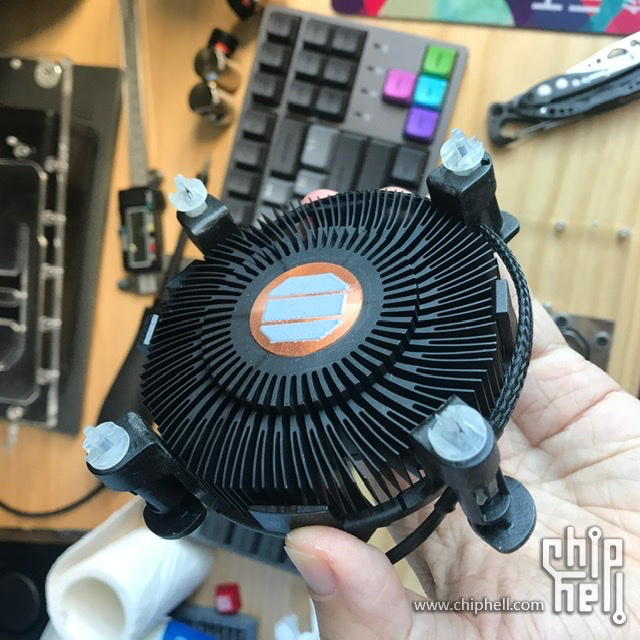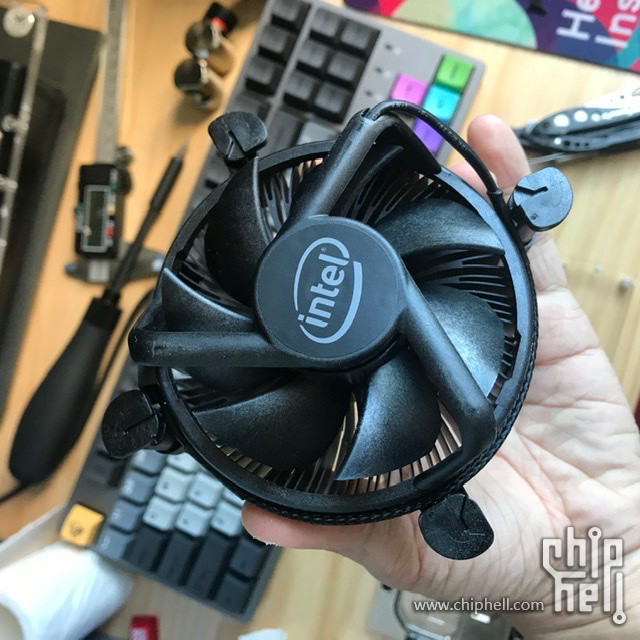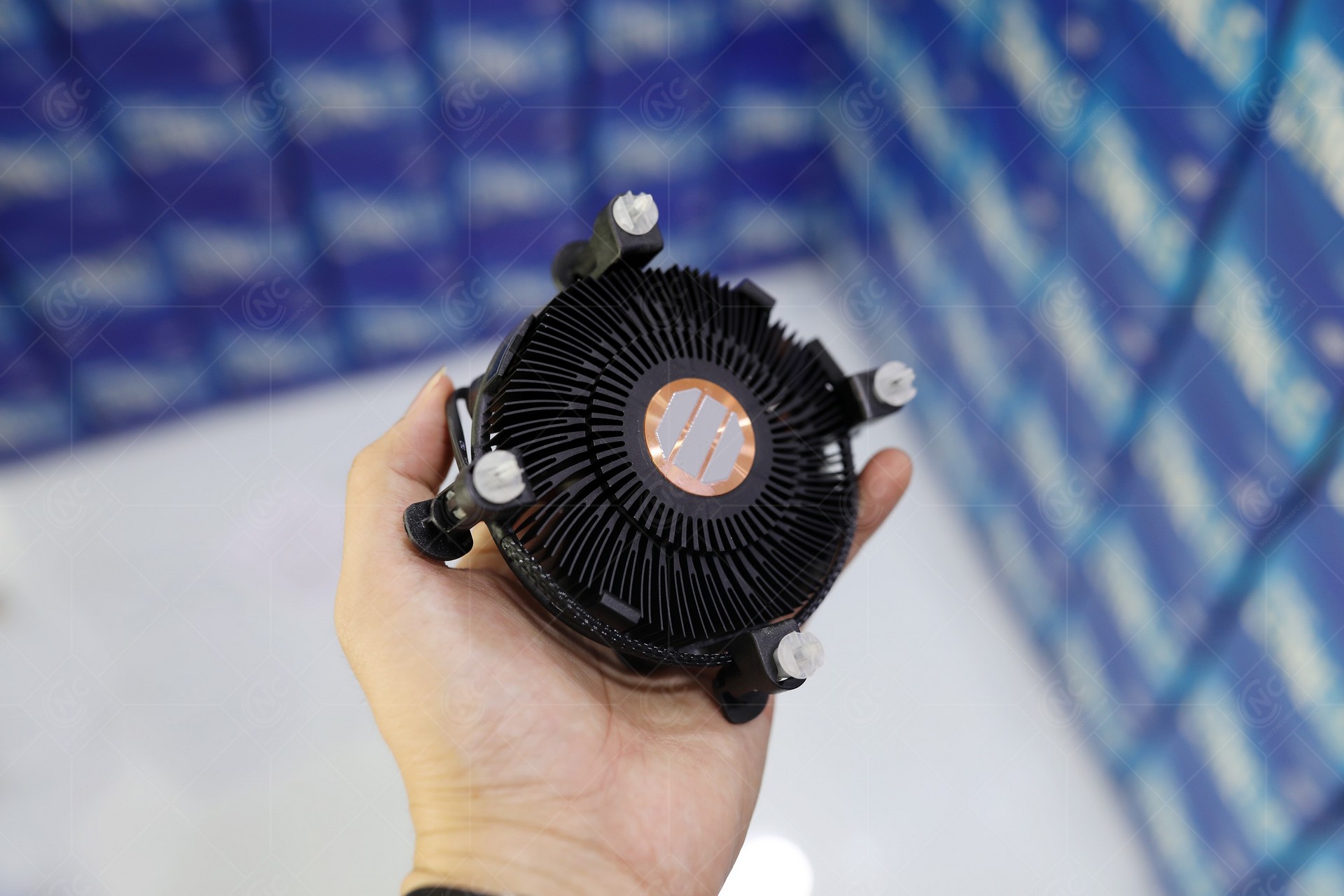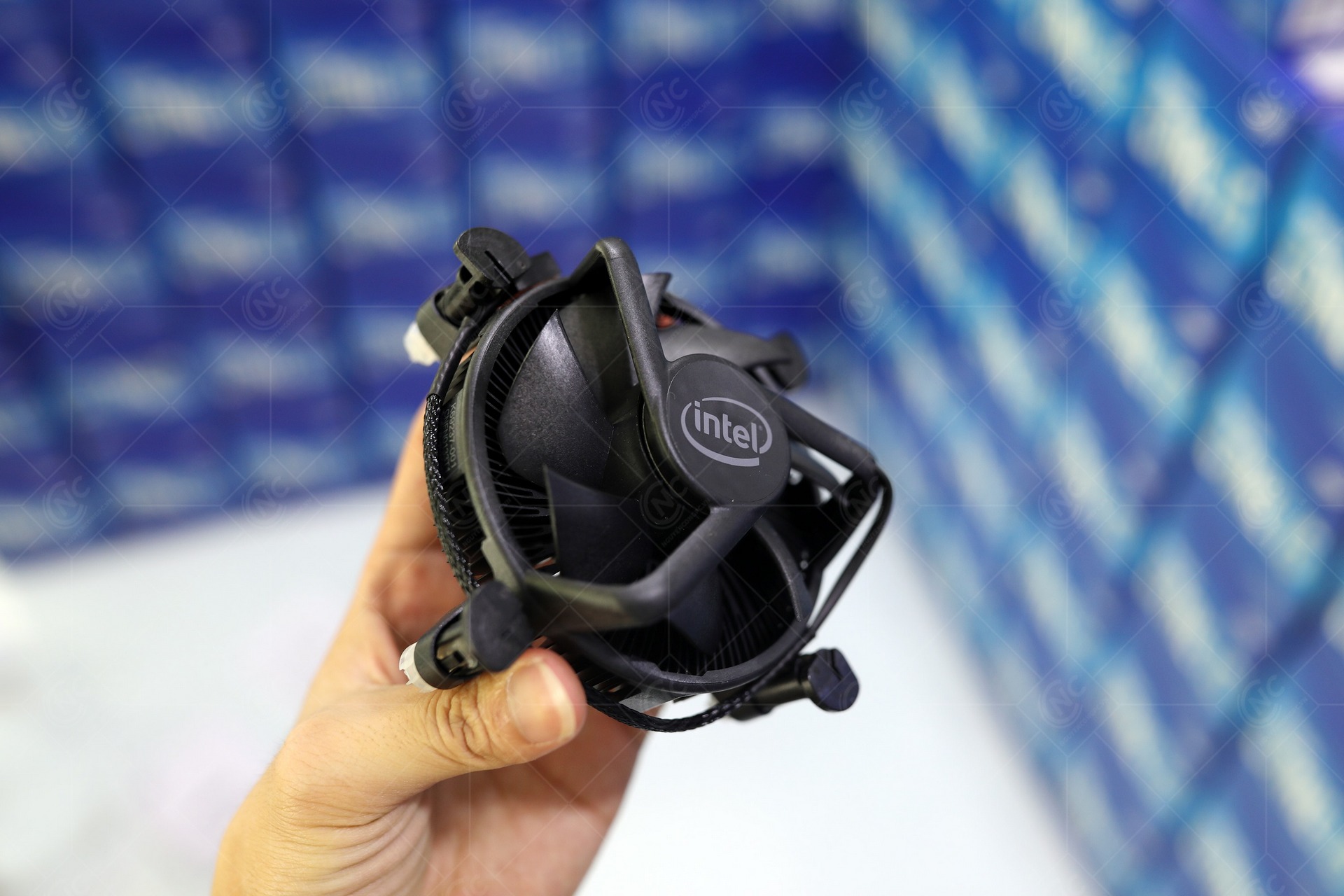Intel Revamps Boxed Coolers for Comet Lake Processors, New Blacked-Out Design (Updated)
Back in Black
Update 5/27/20 2:45pm PT: Intel responded with more details surrounding the new coolers and we have modified the text to reflect the new information. Amended text follows:
Reviewers in China and Vietnam recently purchased retail boxed Intel Core i7-10700 processors. They discovered that Intel has (rather silently) updated its boxed coolers, which were sorely in need of a facelift, with a copper slug and a new blacked-out motif. After following up with Intel, the company informed us that the new coolers come with the following processors only:
- 10th Gen Intel Core i9 and Core i7 desktop processors (i9-10900, i9-10900F, i7-10700, i7-10700F)
- Intel Xeon W-1200 workstation processors (W-1290, W-1270, W-1250)
The improved coolers have an 80W TDP rating, which is a step up from the 65W coolers (2015C per Intel's spec) that came with previous-gen 65W chips. Curiously, these new 80W coolers still carry the '2015C' specification moniker but come with a new copper core that helps reduce thermal resistance to improve processor cooling and acoustics. The change was largely needed to address the 80W TDP specification for the listed Xeon W-1200 workstation processors.
The new coolers appear to be a response to AMD's boxed coolers, some of which even come with RGB lighting, that have long served as a notable advantage of buying an AMD chip.





Like Intel's coolers that have shipped with its processors for over a decade, the cooler comes with a central metal housing and aluminum fins splayed outward in a circular fashion towards the four plastic push-pin connectors that secure the cooler to the motherboard. The coolers are obviously LGA 1200 compatible to support the new platform, but should also work with the LGA 115x interface as well.
The blacked-out color scheme and shielded cable stand out as notably better-looking than the old grey-and-black scheme, while the reworked fan assembly now has an Intel logo emblazoned on the hub instead of the old sticker that was inscribed with various technical details of the fan motor. Intel also threw a black sheath over the four fan wires. Overall, the look is much cleaner and is now at least passable for a run-of-the-mill PC.
The copper core helps the cooler wick more heat from the processor than the old aluminum core, and that's a sorely needed improvement. Intel did use a copper core in the past, but discarded it with its previous-gen boxed coolers, instead going with an all-aluminum core that could lead to performance limitations. That's because Intel has traditionally provided boxed coolers that match the processor's TDP specifications.
Get Tom's Hardware's best news and in-depth reviews, straight to your inbox.
Unfortunately, Intel's TDP specifications outline the amount of cooling capacity needed for the processor when it operates at its base frequency. Still, the processor generates much more heat during boost activity. As we outlined with targeted testing, in many cases, the boxed coolers couldn't unlock the full performance of the processor.
For instance, Intel rates the Core i7-10700 with a 65W TDP, but that increases when the processor engages its turbo boost during demanding workloads. Intel now increases power consumption by 1.8x during boost activity (PL2), so the Core i7-10700 should draw up to 117W. That means the extra 15W of cooling capacity afforded by the new cooler still isn't enough to ensure you get the full performance of the processor during demanding workloads, but we'll have to test the coolers to assess the full impact during demanding workloads.
The new coolers definitely look much better than their predecessors, which is an obvious change to attempt to match AMD's ultra-impressive boxed coolers. However, some of AMD's boxed coolers even come with RGB lighting, so Intel still has some work to do to fully match AMD in that department. Intel also still uses plastic push pins to secure the cooler to the motherboard, and, barring any radical changes to the mounts, these can be among the most frustrating mounting techniques for the uninitiated. As before, the coolers come with pre-applied TIM (thermal interface material), and the down-blowing fan helps provide some airflow to the power delivery subsystem and memory.
Coolers designed for the LGA 115x socket are compatible with the new LGA 1200 socket, and vice versa, but Intel says the new coolers will only ship with the aforementioned Socket 1200 processors.

Paul Alcorn is the Editor-in-Chief for Tom's Hardware US. He also writes news and reviews on CPUs, storage, and enterprise hardware.
-
NightHawkRMX The heat sync is still rather small, so I wouldn't expect a miracle just because of the copper, but it should help a fair bit. Looks are nice, but I would still prefer a $20 tower coolers aesthetic.Reply -
salgado18 A 65W-max cooler for Intel cpus is as good as not including one. It can keep the processor up to base clocks? They desperately need more capable coolers.Reply
(I won't joke that the bundled cooler should be an AIO, but... well, just did, sorry) -
Pat Flynn These coolers are the exact same as they've always had for years. The reduced Z height will obviously cause reduced TDP cooling capacity.Reply
FYI - Intel's used this exact cooler since the Sandy Bridge (Intel 2000 series) era. The copper slug was always in the higher TDP models (77-91W), and since they've reduced the Z height on the new coolers, they will be even more pointless to use on an enthusiast machine.
Basically, these coolers should only be used for anyone not taxing their computer - not needing to turbo more than say, 10 seconds max. -
NightHawkRMX Reply
Intel has rated pretty much all of their locked CPUs at 65w since sandy bridge. This meant they didn't get the copper slug. Even CPUs like the 8c/16t i9 9900 got the pathetic little heatsync. You can imagine how bad a tiny aluminum heat sync on an i9 9900 would be. Not acceptable.Pat Flynn said:FYI - Intel's used this exact cooler since the Sandy Bridge (Intel 2000 series) era. The copper slug was always in the higher TDP models (77-91W), and since they've reduced the Z height on the new coolers, they will be even more pointless to use on an enthusiast machine. -
Deicidium369 Reply
the unlocked K Series never come with a coolersalgado18 said:A 65W-max cooler for Intel cpus is as good as not including one. It can keep the processor up to base clocks? They desperately need more capable coolers.
(I won't joke that the bundled cooler should be an AIO, but... well, just did, sorry) -
NightHawkRMX Reply
They used to before intel cheaped out.Deicidium369 said:the unlocked K Series never come with a cooler
2500k and 2600k had a copper core hsf.
I believe some 8700k owners reported their cpu came with a stock cooler despite intel saying it doesn't come with one. I believe the retailer could at one point ask for their k cpus witk a stock cooler. -
King_V Reply
I thought I'd variously seen them at 95W (Sandy Bridge) for the locked and unlocked CPUs (at least i5 and i7), and Haswell at 84W locked, 88W unlocked. Not counting the T and S processors, of course. Skylake (original) seems to have gone with 65W locked, 91W unlocked.NightHawkRMX said:Intel has rated pretty much all of their locked CPUs at 65w since sandy bridge. This meant they didn't get the copper slug. Even CPUs like the 8c/16t i9 9900 got the pathetic little heatsync. You can imagine how bad a tiny aluminum heat sync on an i9 9900 would be. Not acceptable. -
NightHawkRMX Reply
Yea you are right. The cooler wasn't much of an issue until the heat outputs went up and the coolers didn't. Like coffee lake and newer.King_V said:I thought I'd variously seen them at 95W (Sandy Bridge) for the locked and unlocked CPUs (at least i5 and i7), and Haswell at 84W locked, 88W unlocked. Not counting the T and S processors, of course. Skylake (original) seems to have gone with 65W locked, 91W unlocked. -
Deicidium369 Reply
I had the 2600K with a stock cooler - still running that stock cooler. I do not over clock. 2500/2600/2700 were an awesome generation.NightHawkRMX said:They used to before intel cheaped out.
2500k and 2600k had a copper core hsf.
I believe some 8700k owners reported their cpu came with a stock cooler despite intel saying it doesn't come with one. I believe the retailer could at one point ask for their k cpus witk a stock cooler.
The i8700 (non K, not unlocked) was available with a cooler (box). Prior to my i9900K systems I had the i8700K and even if it did come with a stock cooler would have never used it. The Evo 212 did a decent job at the time, later to be swapped out with a be quiet! Shadow rock of some sort.
K versions generally do not include a stock cooler. Not a question of cheaping out - Intel knows that most people buying the K versions are going to want to install a better aftermarket cooler. -
NightHawkRMX My friend had an i7 8700 with the stock cooler. He said the cooler whined in pain the entire time and the CPU ran very toasty. He got better performance with a better cooler.Reply